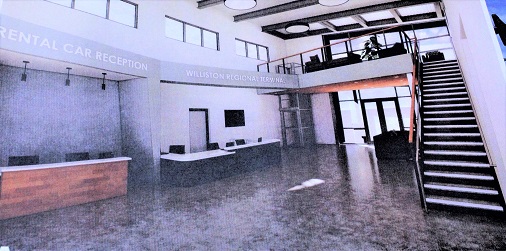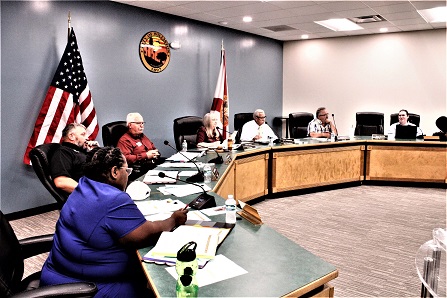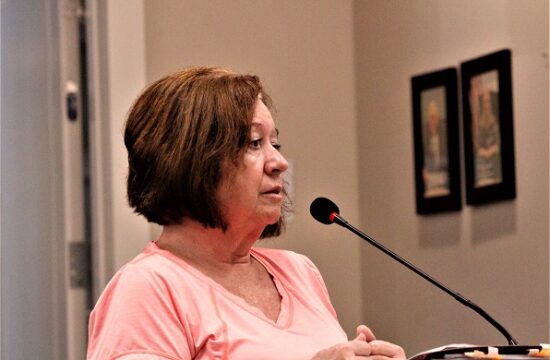By Terry Witt – Spotlight Senior Reporter
A conceptual plan for the first-ever pocket neighborhood in Williston, a development of 60 homes on 8 .8 acres of land wrapped around the Winn Dixie store, was given approval by the Williston City Council Tuesday.

While the early conceptual plan for Laurel Point looks good on paper, questions remain about whether the 5-foot separation between homes is enough space and whether there should be a separate parking lot for visitors.
City Manager Jackie Gorman, the former city planner, said she overlooked the question of whether there should be at least 7 feet of space between homes instead of 5 feet.
“I think it’s part of the building code. We will be double-checking. I think what happens is you at least need a firewall,” Gorman said.
Engineer Christopher Gmuer, representing Camellia Plantation, Inc., responded to questions raised by the Planning and Zoning Board at an earlier meeting about the need for a visitor parking lot by adding a third parking space to each home. The third space was part of the revised conceptual plan.

Gmuer said the development company wants Laurel Point to look like a cottage neighborhood, not an apartment complex.
“We’re walking the line between a traditional single-family subdivision and an apartment complex. We want to be somewhere in the middle and that’s why we did not want to have a visitor parking lot because that makes it feel more like an apartment complex,” he said. “You want to attract people who are looking for single-family homes but don’t want to have a large yard and yet they still want to have amenities – that sort of middle ground with this cottage neighborhood we’re trying to attract,” he said.
Council President Debra Jones said she liked the concept of having three parking spaces behind homes, but she said the planning commission thought there was a need for visitor parking.
Councilman Michael Cox said he has visited some Gainesville neighborhoods where people were parking along the edge of the road.
“That’s what planning and zoning is trying to address. They don’t want that to happen,” Jones said.
The current plans don’t provide space for garages to be constructed behind homes nor do any of the conceptual drawings show space for car canopies to protect vehicles from the elements.
Questions were also raised about whether the future Homeowners Association or city police would control noise in a community packed so tightly together and if provisions would be made to address noise control. Gmuer said it would probably be a combination of both. Homeowner Association rules and city noise rules would no doubt govern how noise would be controlled.
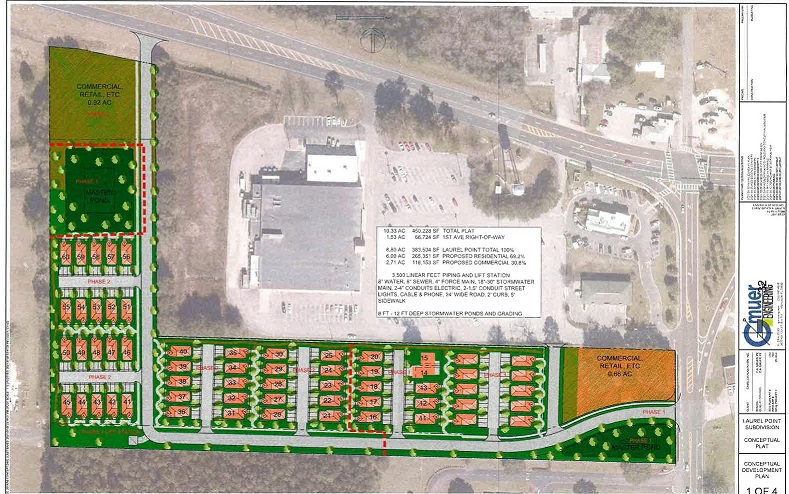
Dr. Wade Bullock, one of the developers associated with Camellia Plantation, Inc., the development company proposing Laurel Point, wondered why there was so much concern about noise.
Repeating the words of his engineer, Bullock said traditional apartments have only a wall to separate apartments. Laurel Point has five feet between free-standing homes.
“Like he said, this is somewhere between single-family homes and apartments and certainly there are means of keeping noise down between apartments. You got a wall between you and your neighbor. I don’t know why this would raise a greater hazard with noise than an apartment complex,” Bullock said.
The Planning and Zoning Commission also expressed concern about noise from nearby U.S. 27A being a problem for residents living on the northern edge of the development. Gmuer responded to those concerns by placing a large commercial piece of land that is part of Laurel Point on the far northern edge of the development behind Winn Dixie and adding a drainage area beside the commercial parcel to buffer the community from highway noise.
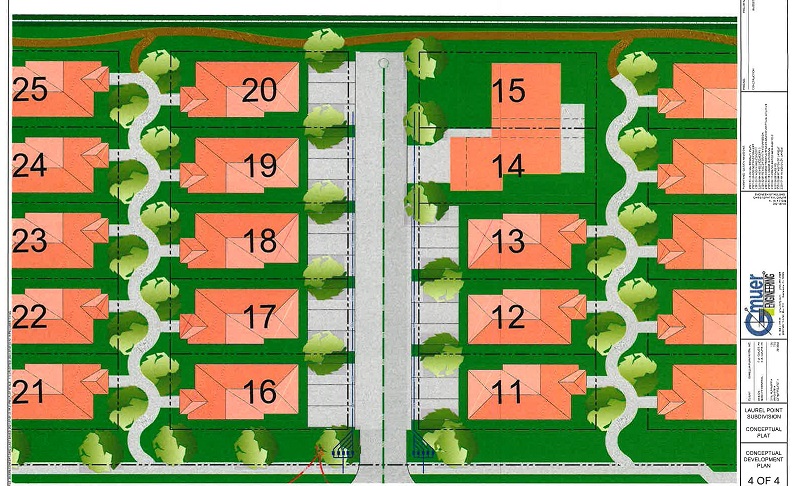
The development company addressed other concerns by establishing a private road connecting Laurel Point to Winn Dixie.
Laurel point will be designed and developed in 10-home clusters. Sidewalks will run the entire length of the subdivision and homes will share landscaped common areas to enjoy the outdoors.
“The front of the houses will be facing each other so they have a shared walkway with its green areas in front of the units and at the back, we have three sparking spaces per unit,” Gmuer said.
The conceptual plan approved by the council can be changed as Laurel Point moves into the final phases of approval. The next step is approval of a preliminary plat. The council must also approve a development agreement that spells out the responsibility of the developers, the Homeowners Association, and the responsibilities of the city. Final plat approval is needed before construction can begin on the first homes.
Planning and Zoning Commission Chairman Albert Fuller hammered down the point that 5 feet between homes isn’t much space. He said the standard lawnmower is 2 ½ feet wide which means one neighbor mowing their lawn would probably impact his or her neighbor’s lawn.
The Homeowners Association apparently will maintain a percentage of the lawns and the common areas but those plans have yet to be drawn. Gmuer said several state agencies will review the Homeowner Association plans before the project can be approved.
“We don’t have any Homeowners Associations,” said Jones. That’s why we’re asking primary questions. We just don’t have any in the city limits. This is our first one.”
—————–
City of Williston Regular Meeting August 17, 2021; Posted August 19, 2021





